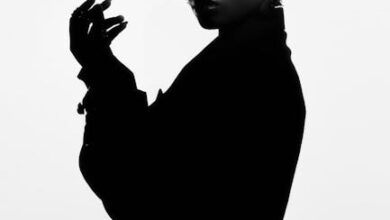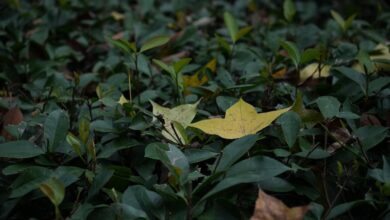The “Rockstar” Who Wore a Suit: Rethinking Abdel Halim Hafez

Imagine a rock star: what comes to mind? Perhaps a guitar hero shredding on stage, a rebellious icon in leather, or a powerful vocalist captivating thousands. Now, picture Egypt’s most revered classical singer, Abdel Halim Hafez – crisp black suit, neatly styled hair, a maestro of melancholic melodies and soaring romantic ballads. Do these two images align? For many, probably not. Yet, Joseph Tawadros, the acclaimed Egyptian-born Australian oud virtuoso, argues that Abdel Halim was, in his own time, very much a rock star. And when you dive into the heart of their music, this seemingly audacious claim starts to make profound sense.
It’s a fascinating perspective that challenges our neatly constructed boxes for music and musicians. We often judge artists by their appearance, their instrument, or the genre labels we’ve assigned. But what if the true essence of a “rockstar” – that boundary-pushing, genre-defying spirit – exists far beyond the confines of a guitar and an arena stage? What if it’s about innovation, impact, and the sheer audacity to reshape sound itself? Tawadros’s insight into Abdel Halim, and indeed his own pioneering journey with the oud, compels us to listen differently, to look beyond the obvious, and to appreciate the subtle revolutions hidden in plain sight.
The “Rockstar” Who Wore a Suit: Rethinking Abdel Halim Hafez
Abdel Halim Hafez, often affectionately known as “El Andalib El Asmar” (The Dark-Skinned Nightingale), remains an untouchable icon in Arab music. His legacy is built on a foundation of classical training, impeccable vocal control, and a profound emotional connection with his audience. His concerts were monumental events, drawing crowds that rivaled any Western pop sensation. He performed with orchestras, his voice soaring over lush string arrangements and traditional Middle Eastern percussion.
So, where does the “rock band” analogy come in? Tawadros points to Abdel Halim’s willingness to experiment, to embrace sounds that were, for his era, undeniably modern and even daring. Consider his 1957 hit, “Ya Albi Ya Khali” (Oh My Empty Heart). Listen closely, and you’ll detect more than just classical Arab instrumentation. Abdel Halim layered in keyboard instruments, electric guitars, and rhythms that echoed the burgeoning rock-and-roll movement of the time.
This wasn’t simply a subtle nod; it was a bold integration. In an era where purists often resisted external influences, Abdel Halim was a true sonic adventurer. He understood that music evolves, and he wasn’t afraid to be at the forefront of that evolution. He didn’t just sing; he sculpted a soundscape that resonated with a changing world, blending timeless melodies with contemporary textures. This wasn’t just classical music; it was a vibrant, living art form pushing its own boundaries.
Beyond the Image: Defining a Musical Pioneer
Tawadros’s definition of a “rockstar” transcends the visual clichés. It speaks to an artist’s power to connect, to innovate, and to leave an indelible mark on their cultural landscape. Abdel Halim commanded stages, inspired fervent devotion, and perhaps most importantly, consistently sought to expand his musical palette. He took risks, challenged conventions, and through his art, reflected the spirit of his time while simultaneously shaping it. That, in essence, is the heart of a true musical pioneer, a genuine rockstar.
From Ancient Strings to Modern Sounds: Joseph Tawadros’s Oud Revolution
If Abdel Halim Hafez was a rockstar in a suit, then Joseph Tawadros is a jazz innovator with an ancient instrument. At 42, Tawadros plays the oud, a lute-like stringed instrument with roots stretching back thousands of years across the Middle East and North Africa. In many minds, the oud is synonymous with tradition, with classical Arab music, folk tunes, and intricate improvisations within established frameworks.
Then you see Joseph Tawadros. He’s often on stage in bright, patterned shirts, an immediate visual departure from the solemnity sometimes associated with classical Middle Eastern music. And when he plays, the music is an intoxicating blend of the familiar and the utterly new. He improvises like a jazz artist, weaving intricate melodic lines that might start with a traditional maqam but quickly veer into unexpected harmonic territories, infused with elements of flamenco, classical, rock, and even blues.
Tawadros isn’t just playing the oud; he’s reinventing its language. He respects its history deeply, but he refuses to be confined by it. His compositions are often vibrant, playful, and deeply spontaneous. He collaborates with artists from diverse backgrounds – from classical orchestras to jazz legends like John Abercrombie and Jack DeJohnette, and even rock musicians. Each collaboration pushes the oud into new contexts, revealing its versatility and depth in ways few imagined possible.
The Oud as a Universal Voice
For Tawadros, the oud is not just an instrument of a specific culture; it’s a universal vessel for expression. He explores its full sonic potential, developing new playing techniques and expanding its dynamic range. His music is a testament to the idea that tradition is not static, but a living, breathing entity capable of constant evolution. He demonstrates that an instrument can carry the weight of history while simultaneously soaring into uncharted modern landscapes.
Much like Abdel Halim, Tawadros isn’t merely performing; he’s challenging our expectations. He’s asking us to reconsider what the oud can be, what Middle Eastern music can sound like, and what defines “classical” versus “contemporary.” His work is a masterclass in blending reverence for the past with an unbridled curiosity for the future.
The Unifying Thread: Innovation Across Generations
What truly links Abdel Halim Hafez and Joseph Tawadros, despite their vastly different eras and perhaps even their perceived genres, is a shared spirit of fearless innovation. Both artists understood that true artistry isn’t about adhering strictly to predefined rules; it’s about understanding those rules so intimately that you know precisely how to bend, break, and rebuild them.
Abdel Halim, in his era, expanded the sonic landscape of classical Arab music by incorporating Western instruments and rhythms, thereby broadening its appeal and its expressive power. He recognized that embracing new sounds wasn’t a betrayal of tradition, but an enrichment of it. He was a bridge-builder, connecting different musical worlds.
Joseph Tawadros, in our time, takes that spirit even further. He treats the oud not as a relic, but as a dynamic instrument capable of conversing with any musical tradition. He demonstrates that deep cultural roots can serve as a launching pad for global exploration, creating music that is distinctly his own, yet universally resonant. His work embodies the idea that authenticity isn’t about replication, but about personal interpretation and creative evolution.
They both remind us that the most impactful artists are often those who refuse to be easily categorized. They defy expectations, they challenge our comfort zones, and in doing so, they expand our understanding of what music can be. Their legacies are not just about the notes they played or sang, but about the boundaries they pushed and the perceptions they shattered.
Conclusion: The Enduring Power of Creative Courage
In a world that often prefers neat labels and clear distinctions, the stories of Abdel Halim Hafez and Joseph Tawadros serve as powerful reminders of the enduring power of creative courage. They show us that an artist’s true impact lies not in conforming, but in daring to redefine. Whether it’s integrating electric guitars into classical Arab compositions or improvising jazz melodies on an ancient oud, their journeys are about pushing limits and expanding horizons.
Their music challenges us to listen more deeply, to question our assumptions, and to celebrate the vibrant tapestry woven when tradition meets innovation head-on. It’s a testament to the idea that the “rockstar” spirit isn’t confined to a genre or an image; it lives in the heart of anyone who dares to reinvent, to inspire, and to connect with humanity through the universal language of sound. So, the next time you encounter an artist, pause before you label them. You might just discover a rock star hiding in plain sight, or an ancient instrument singing a brand new song.





